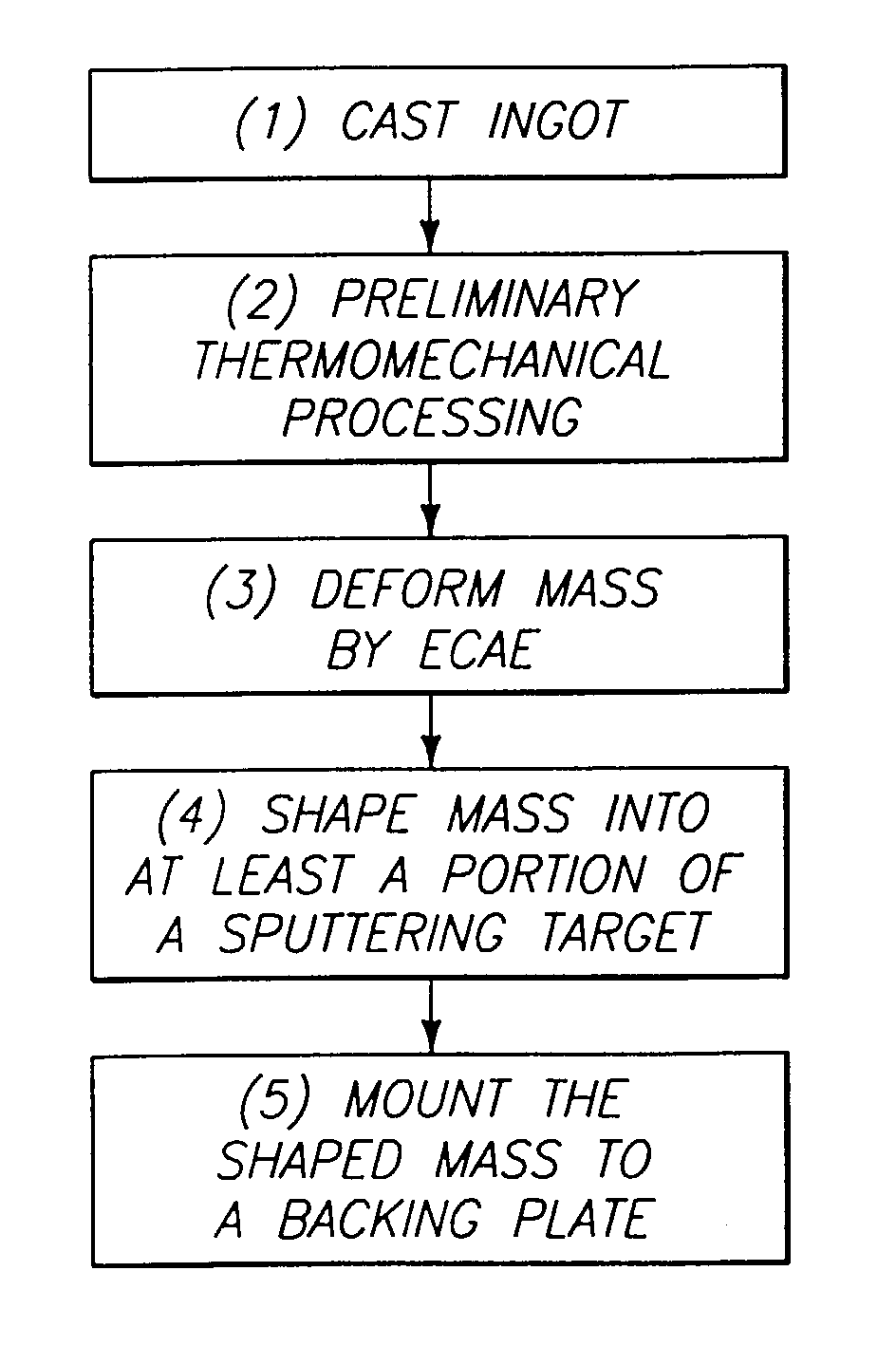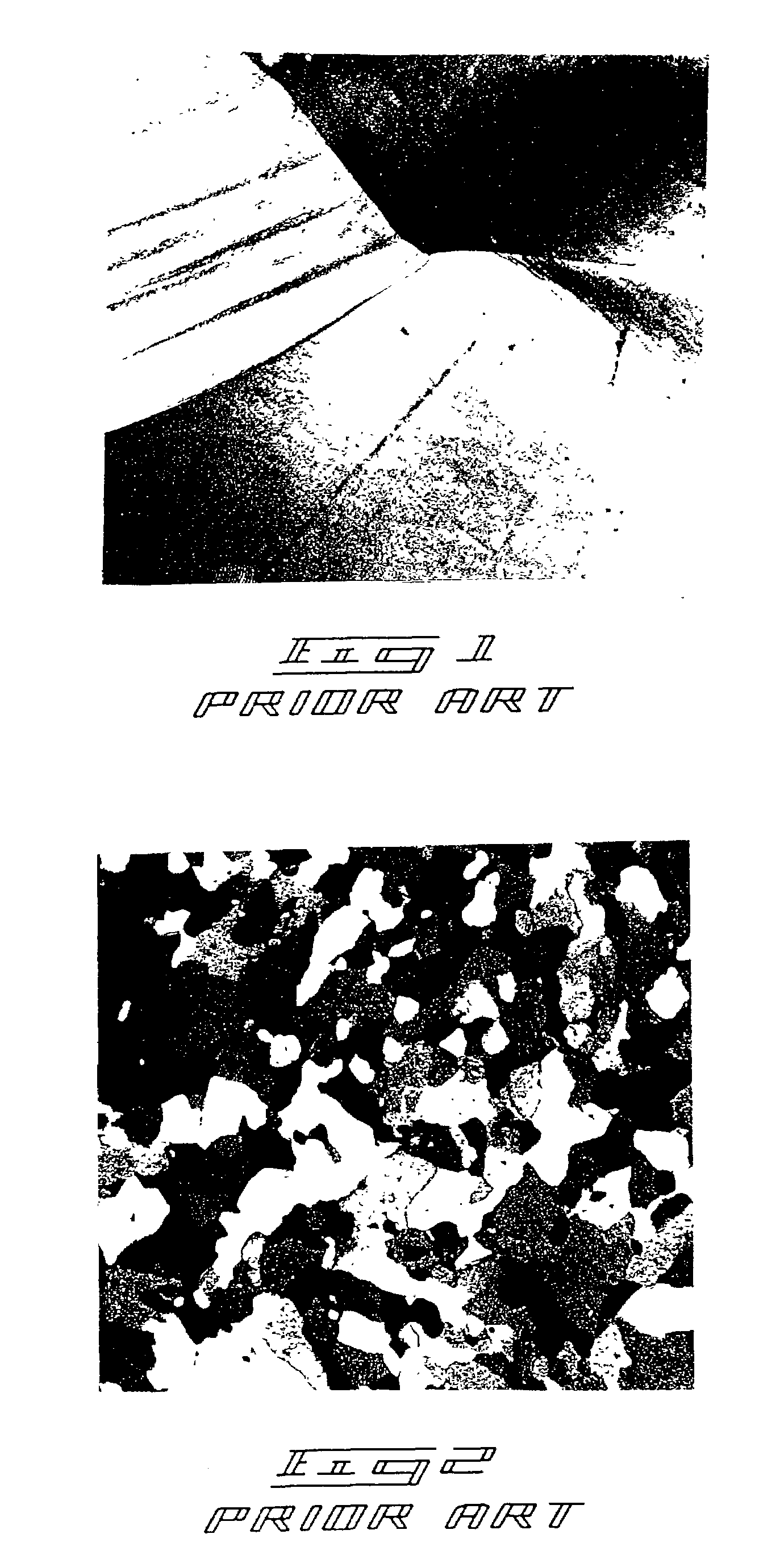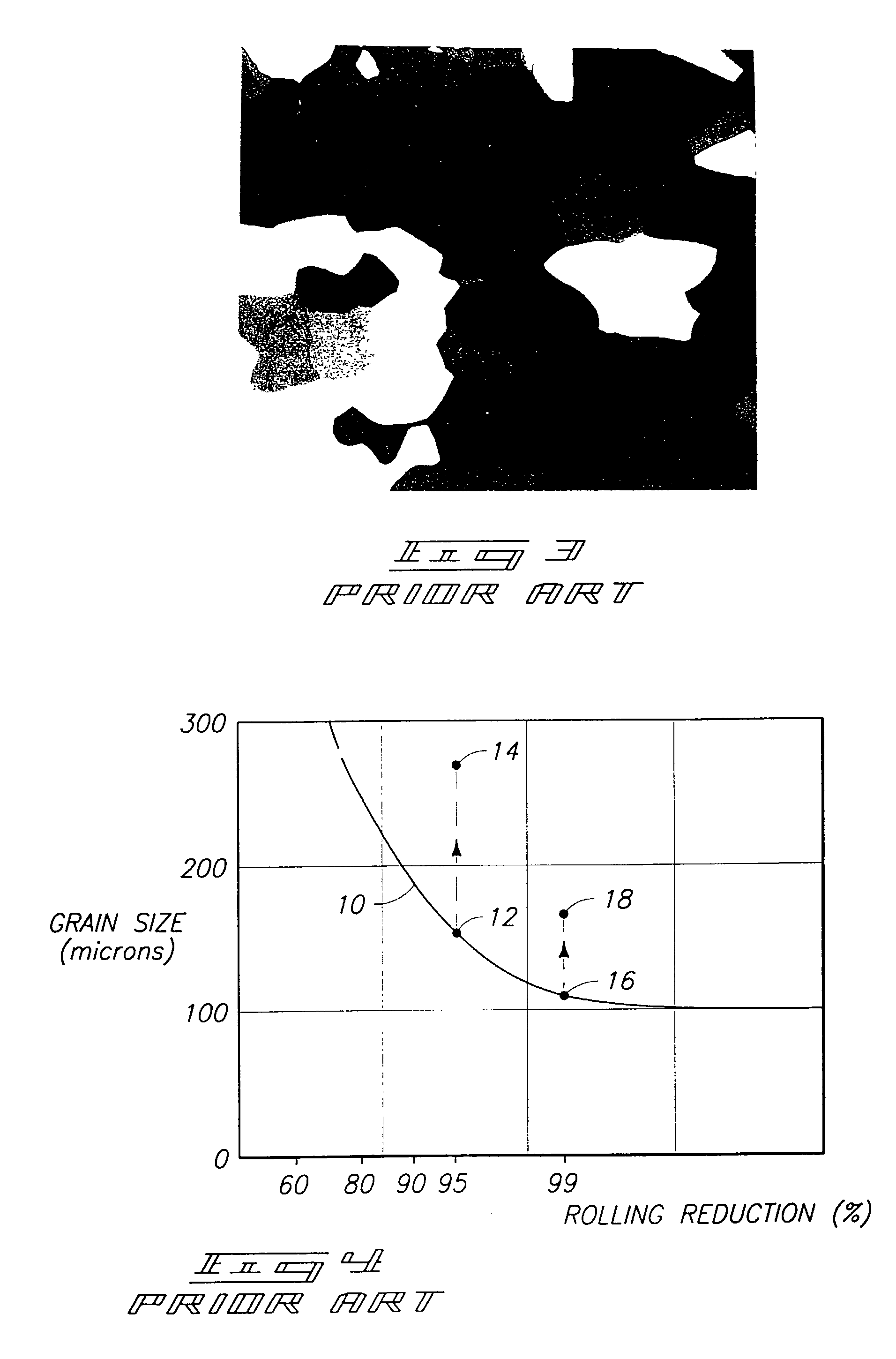Methods of forming aluminum-comprising physical vapor deposition targets; sputtered films; and target constructions
a technology of physical vapor deposition and target, which is applied in the direction of vacuum evaporation coating, coating, sputtering coating, etc., can solve the problems of limiting the practicability of tmp processes, affecting the development of tooling and processing, and usually not wanting structural components
- Summary
- Abstract
- Description
- Claims
- Application Information
AI Technical Summary
Benefits of technology
Problems solved by technology
Method used
Image
Examples
example 1
High-Purity Aluminum Having 30 ppm Si Therein, and Processed in Accordance with Methodology of the Present Invention
[0077]As-cast material defined as 5N5 Al and 30 ppm Si is processed via hot forging at 75% reduction and ECAE for 6 passes via route D. The material has a fully recrystallized structure with grain size of 15 μm. Subsequent rolling with a reduction of 85% grew the average grain size to 20 μm with an aspect ratio of about 1.5. Annealing at a temperature of 150° C. for 1 hour, which was estimated as the highest temperature expected during a subsequent sputtering process, resulted in an insignificant grain growth to 23 μm. During a long (16 hours) exposure to 150° C., grains grew to 28 μm. Also, a temperature increase to 200° C. for 1 hour yielded a similar grain size of about 30 μm. Therefore, ECAE plus rolling provides a fine and uniform structure for a material of 5N5 Al and 30 ppm Si, with an average grain size of less than or equal to about 30 μm which is stable for s...
example 2
High-Purity Aluminum Having 10 ppm Silicon Therein, and Processed Accordance with Methodology of the Present Invention
[0078]Samples were cast, hot forged at 74% reduction and ECAE extruded for 6 passes via route D. A Structure after ECAE is fully dynamically recrystallized with an average grain size of about 19 μm. Subsequent rolling at 85%, and annealing at 150° C. for 1 hour yields a fully recrystallized grain size of around 35 μm.
example 3
High-Purity Aluminum Having 10 ppm Sc Therein, and Processed in Accordance with Methodology of the Present Invention
[0079]Samples were cast, hot forged at 74% reduction, and ECAE extruded for 6 passes via route D. A structure after ECAE is fully dynamically recrystallized with an average grain size of about 26 μm. During rolling up to a reduction of 60%, the structure remains stable and typical for heavily-rolled materials. After 70% reduction, first recrystallized grains are observed. At 85% rolling reduction, about 60% of the sample area was fully recrystallized with an average grain size of about 45 μm.
PUM
| Property | Measurement | Unit |
|---|---|---|
| Grain size | aaaaa | aaaaa |
| Temperature | aaaaa | aaaaa |
| Fraction | aaaaa | aaaaa |
Abstract
Description
Claims
Application Information
 Login to View More
Login to View More - R&D
- Intellectual Property
- Life Sciences
- Materials
- Tech Scout
- Unparalleled Data Quality
- Higher Quality Content
- 60% Fewer Hallucinations
Browse by: Latest US Patents, China's latest patents, Technical Efficacy Thesaurus, Application Domain, Technology Topic, Popular Technical Reports.
© 2025 PatSnap. All rights reserved.Legal|Privacy policy|Modern Slavery Act Transparency Statement|Sitemap|About US| Contact US: help@patsnap.com



